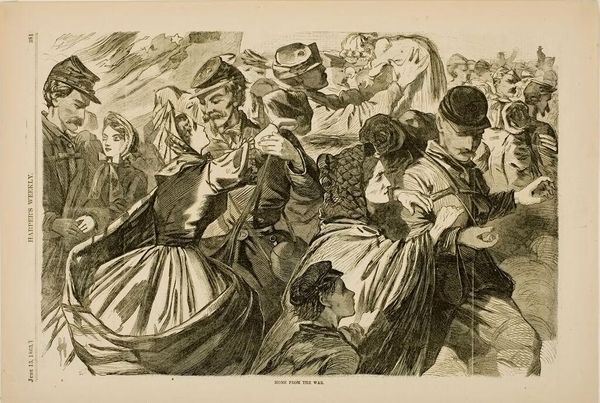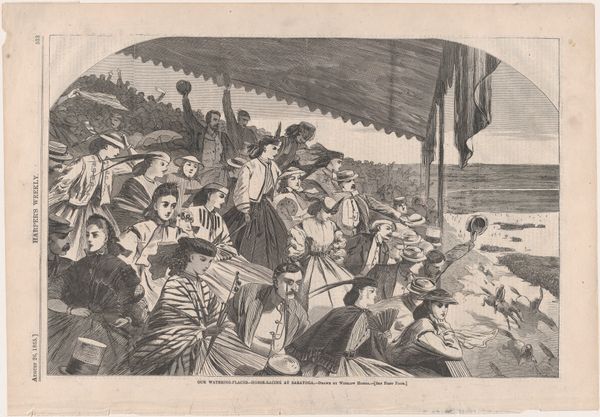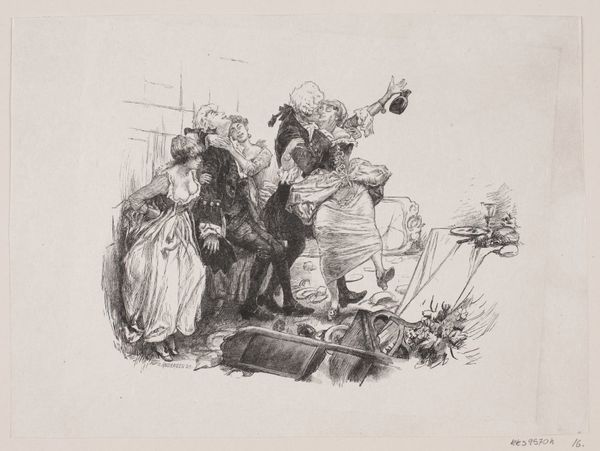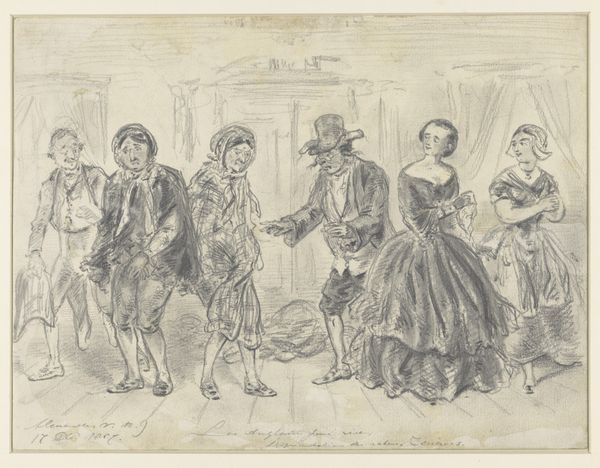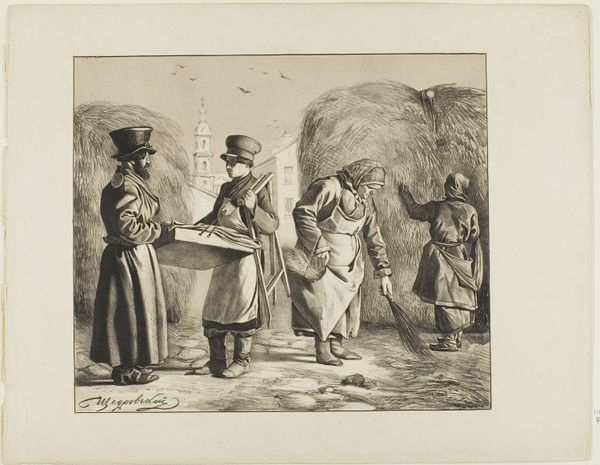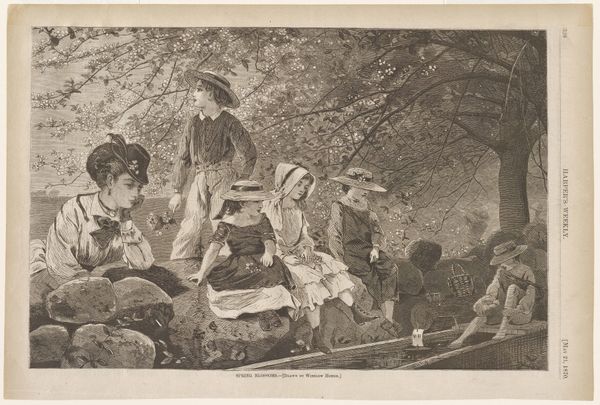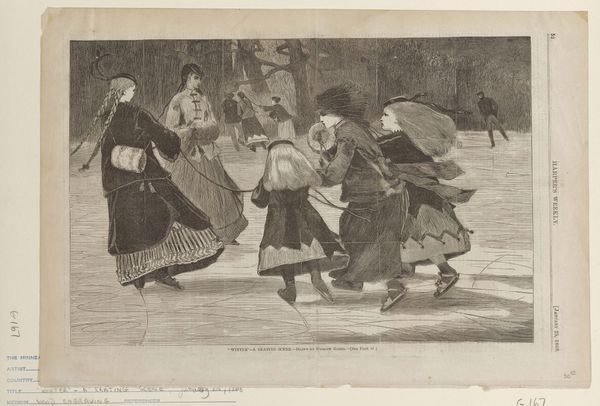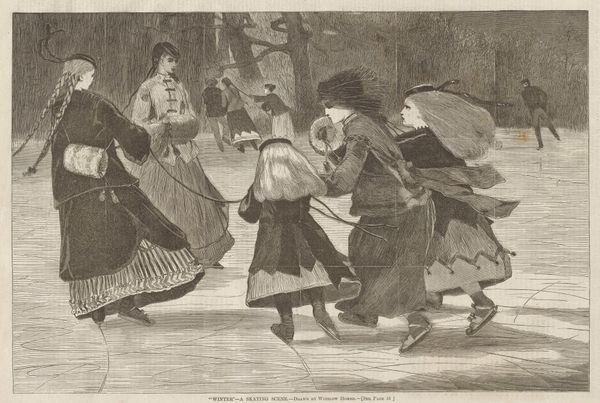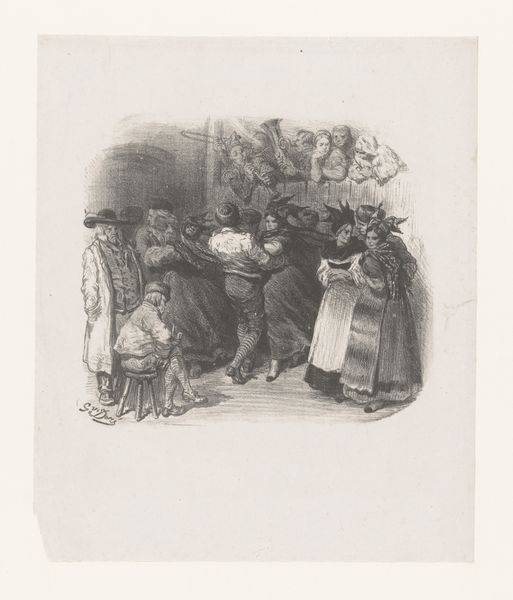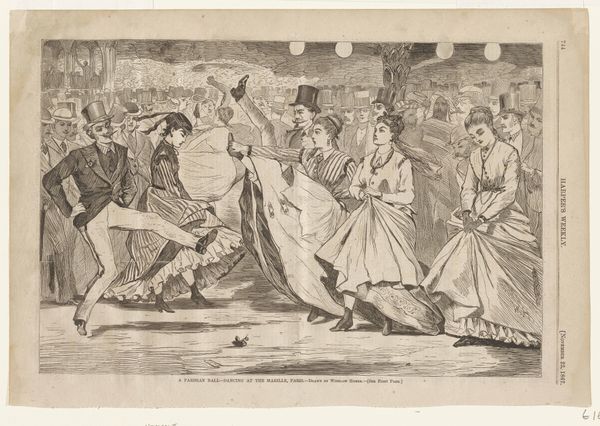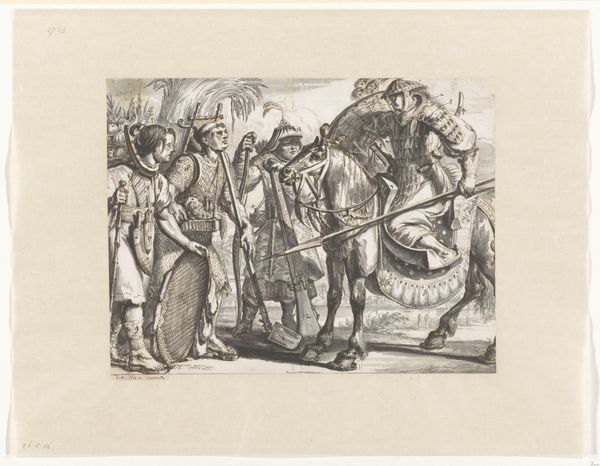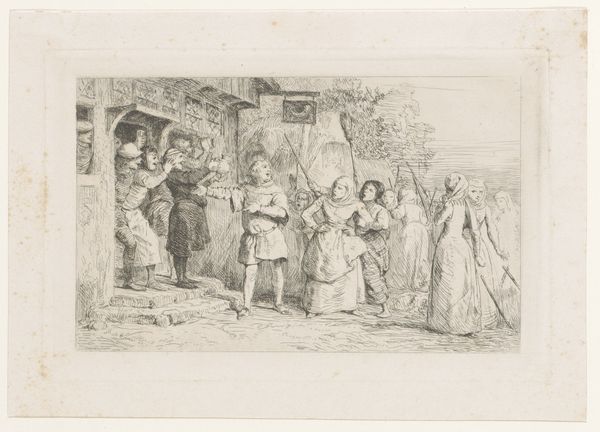
Dimensions: 235 × 352 mm (image); 276 × 407 mm (sheet)
Copyright: Public Domain
Curator: This image really grabs me, a kind of frantic happiness etched in ink. It's incredibly busy, though... almost overwhelming at first glance. Editor: Indeed, "Home From the War", potentially created around 1863 by Winslow Homer, captures quite a scene. Rendered as an engraving, it appeared as a print in Harper's Weekly. The composition is dense. Curator: Right! It feels like Homer crammed every single reunion he could imagine into one single drawing. Each encounter is like a micro-story happening all at once. Did he think that more equals better? Editor: Structurally, the image employs repetition and crowding to evoke the scale of the event, almost verging on chaos. The tonal range, achieved via hatching and cross-hatching, models the forms but restricts the atmospheric perspective. It seems a comment on Romantic idealism viewed through Realist optics. Curator: I feel like he’s trying to grapple with something deeper, like the sheer, messy human cost of it all, of war, or maybe the idealized romanticism of people imagining it. It hits on this complicated realism because nothing’s polished, not one emotion feels perfect. Editor: Considering its potential period of creation, this tension may reveal the growing influence of Realism, though a nod to Academic Art informs the formal execution. Observe how each figure has weight, defined by these lines in very tactile clothing; a sort of almost vulgar yet genuine texture of homebound experience. Curator: I agree; It feels so honest in its roughness. Almost feels as though Homer wanted it as this blunt statement about coming back home. And in all honesty, who does make this picture "Home From the War" really for, like who is its intended audience? Editor: A valid question that addresses Homer’s approach to narrative, where historical context, filtered through genre painting, is meant for an audience facing similar emotional realities, not simply aesthetic pleasures. Ultimately, Homer successfully marries public consumption with artful statement, through its thematic weight, an aesthetic purpose still very visible now. Curator: What is "home" really when such fundamental experiences become translated for wider audiences through mediums like printmaking. Makes you wonder, right? Editor: Yes, it prompts one to reflect on the very materiality of media, which offers access and intimacy for these homecomings.
Comments
No comments
Be the first to comment and join the conversation on the ultimate creative platform.
